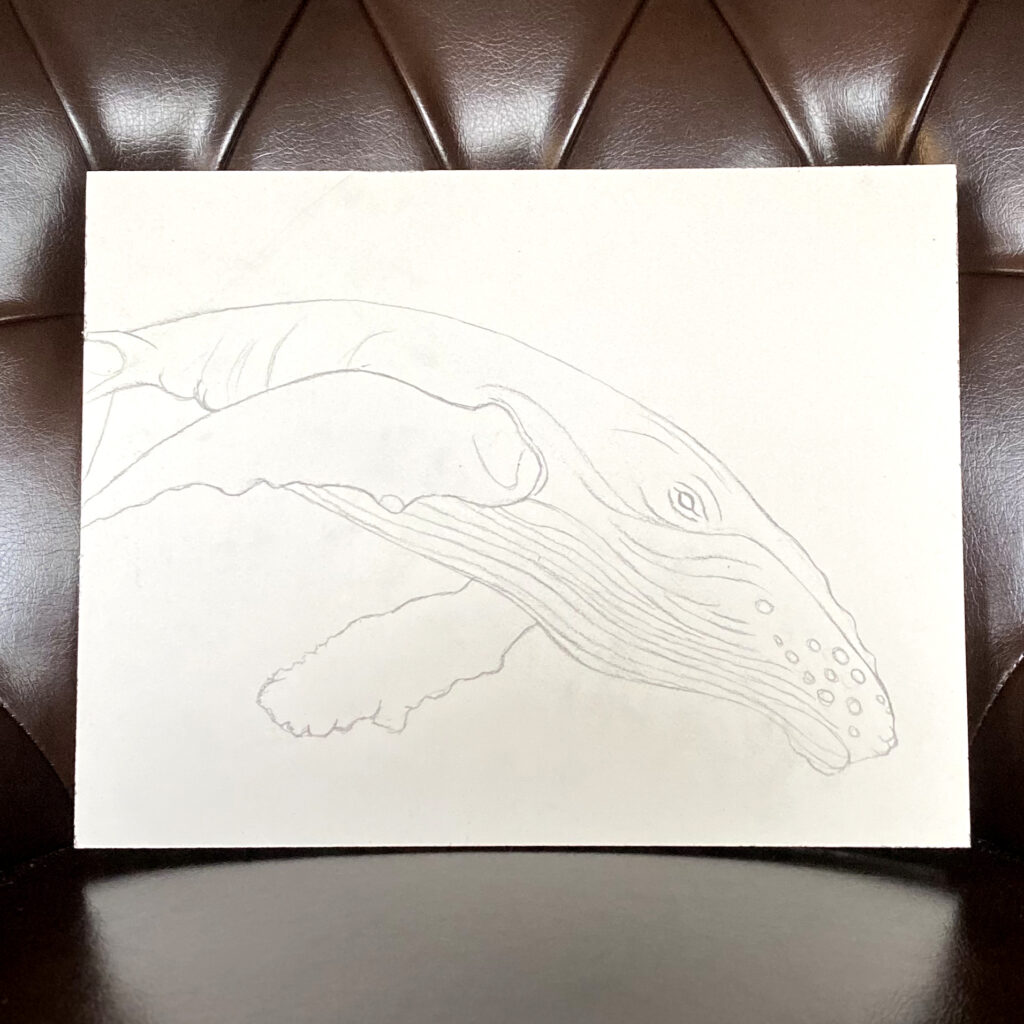When I was in grade school and high school, I had an art teacher who emphasized the importance of learning the fundamentals of art while also developing your own style and artistic process.
Robin didn’t necessarily spark a lot of creative desire in me, but she taught me many invaluable lessons that have allowed me to become a successful artist.
She showed me that lying on my side while I paint was actually not an obstacle.
It’s MY perspective. She was right there beside me as I developed my unique art technique.
I’m taking you behind the scenes of how I painted this humpback whale Taking the Plunge from Off the Hook: A Journey Beneath the Waves!
Check out all the framed originals available on Etsy. There’s over 20 gorgeous sea creatures!

How OI Impacts My Painting Process
Over the years, I’ve had to adapt my painting technique to my physical limitations with OI.
I generally don’t work on art bigger than 9×12 inches and I have to compensate for my unique angle, especially when I do the initial drawing. The world looks very different when you lie on your side, and sometimes things that look straight are not.
Robin also taught me how to conquer this challenge by doing it with me, and it was such a valuable lesson.

Here’s how my creative process starts:
First, I find a photo that inspires me.
I have several wildlife photographers who allow me to use their photos without copyright infringement, and sometimes I spend my nights scouring stock photo sites. I have folders and folders of potential subjects saved on my computer, organized by species.
Then the real work begins with a simple line drawing.
How A Painting Comes Together
My drawings are extremely minimal, just enough of an outline to use as a guide as to where the important parts of the animal are (i.e., the eyes, nose, body outline, markings, etc.).
Now, time to paint!

I use what I call the “back to front” painting method. I paint what looks further away first (the background), and then work on the subjects in the foreground.
In this example, I blocked in the background with a couple of brilliant blues, Payne’s Gray, and Permanent White before starting the whale at all.
This technique helps me make a two dimensional piece of art look three dimensional and creates a sense of depth. It also creates texture (like the ribbing on the whale or fur on a land mammal).
The final step on almost every painting is adding in those tiny details that make it particularly spectacular. I do this with a brush that has about 7 hairs.
It sounds tedious, and it takes some patience, but it’s always my favorite part. It’s the point where a painting really comes alive, and no matter how many of these I do, I never get tired of that moment.
At this point, all I have left to add is my signature. I rarely go back and rework paintings after they’re signed, so 9 times out of 10, this marks the end of a painting.

Unique Challenges + What’s Normal, Anyway?
When I break it down like this, my painting process sounds easy…but it’s not.
It’s taken me years of trial and error and lots of practice to be able to finish a painting like this one in a few days.
I’ve learned when my best time of day to paint is, the importance of taking short breaks, and even setting a schedule that makes me remember to eat and take bathroom breaks!
I’ve also learned to switch up my subject matter from painting to painting so that I don’t get bored. Burnout is a real thing, and that’s not something I want to deal with often.
Painting has changed my life. Until next time, don’t let your obstacles control you. You can find your something too.
FEBRUARY ONLY – BUY 1 OF KATHERINE’S ORIGINALS & GET HER BOOK LOOKING UP FREE!


